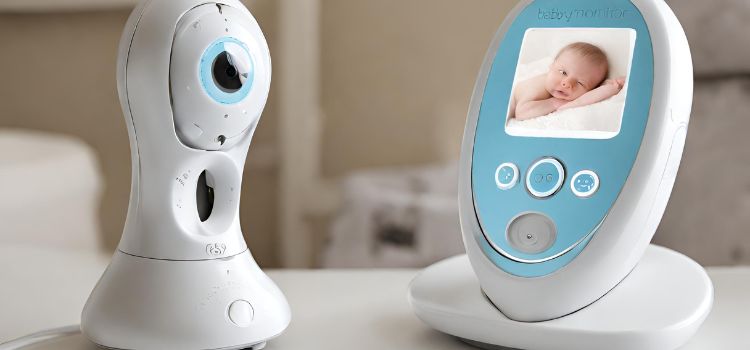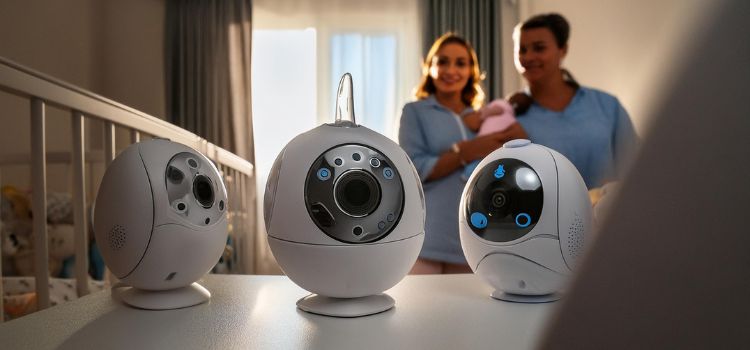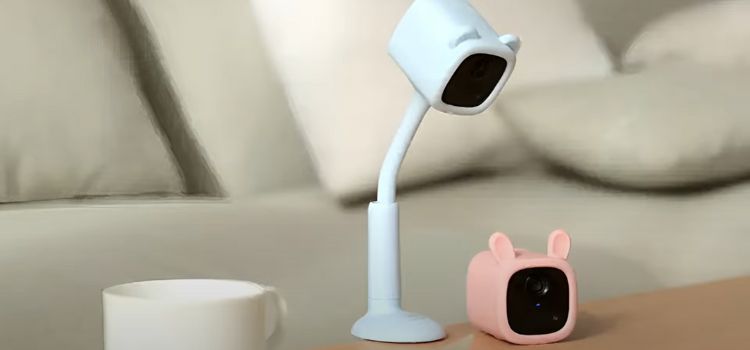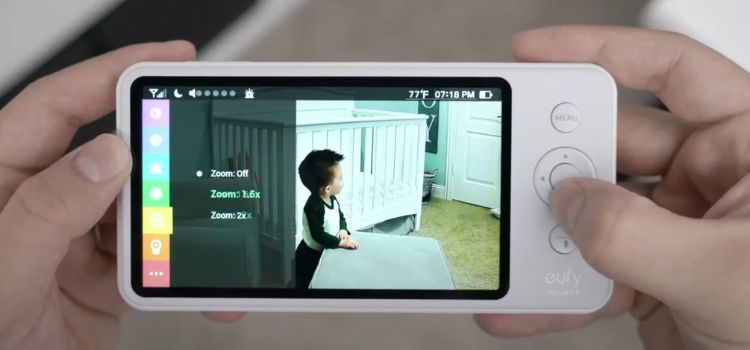No, baby monitors are not eligible for HSA. Baby monitors are not considered as qualified medical expenses for Health Savings Accounts (HSA).

Health Savings Accounts (HSA) provide individuals with a tax-advantaged way to save money for qualified medical expenses. These accounts allow individuals to set aside pre-tax dollars, which can be used for various medical-related costs.
However, it is important to understand which expenses are eligible for reimbursement through an HSA. One question that often arises, is whether baby monitors are considered a qualified expense?
Read the article to understand the specific guidelines for eligible expenses, so that it can help you to make informed decisions about your HSA funds.
How To Determine If Baby Monitors Are Hsa Eligible

Determining the eligibility of baby monitors for HSA coverage is essential. By understanding the criteria, such as medical necessity and documentation requirements, parents can determine if they can use their HSA funds for this important purchase.
Are Baby Monitors Hsa Eligible?
When it comes to providing a safe environment for your little one, baby monitors are an essential tool. But, are baby monitors HSA eligible?
In this section, we’ll delve into the criteria for HSA eligibility of baby monitors and provide the necessary documentation and guidelines for HSA reimbursement.
Understanding Hsa Eligible Expenses
To determine if baby monitors are eligible for HSA reimbursement, it’s important to understand what expenses qualify under Health Savings Accounts (HSA). Here’s what you need to know:
- HSA eligible expenses are those that are primarily for medical care, intended to diagnose, prevent, or treat a medical condition.
- Qualified medical expenses generally include items and services covered by health insurance plans, but with specific guidelines for HSA eligibility.
Criteria For Hsa Eligibility Of Baby Monitors
Baby monitors can be considered eligible for HSA reimbursement if they meet certain criteria. Here are the factors to consider:
- Prescription Requirement: Baby monitors must be prescribed by a healthcare professional to qualify as an eligible expense. This requirement ensures that the device is medically necessary for the well-being of the child.
- Medical Condition: Baby monitors may be eligible if they are specifically designed to monitor a medical condition that requires constant supervision or surveillance. For example, monitors for infants with sleep apnea or respiratory issues may qualify.
- Eligible Types: In general, audio monitors, video monitors, and movement monitors may be eligible for HSA reimbursement if they meet the prescription and medical condition criteria. However, specific plan guidelines may vary, so it’s important to check with your HSA provider.
Documentation And Guidelines For Hsa Reimbursement
To ensure HSA reimbursement for your baby monitor, it’s crucial to follow the proper documentation and guidelines. Here’s what you need to do:
- Obtain a Prescription: Consult with your healthcare professional to determine if a baby monitor is necessary for your child’s medical condition. Obtain a written prescription to validate the medical necessity of the device.
- Keep Receipts and Documentation: Keep all receipts and documentation related to the purchase of your baby monitor. This includes the prescription, invoice, and any additional supporting documents required by your HSA provider.
- Submit Reimbursement Claim: Follow your HSA provider’s guidelines for submitting a reimbursement claim. Include all necessary documents and accurately complete the required forms to facilitate a smooth reimbursement process.
Baby monitors may be HSA eligible under certain circumstances. By understanding the criteria for HSA eligibility, gathering proper documentation, and adhering to reimbursement guidelines, you can ensure that your HSA covers the expense of a prescribed baby monitor.
Remember to consult with your HSA provider for specific plan details and requirements.
Benefits Of Using Hsa For Baby Monitors
HSA eligibility is a notable benefit when considering baby monitors. With the ability to claim expenses, using an HSA for baby monitors can save money and provide peace of mind for parents.
If you’re considering purchasing a baby monitor, you may be wondering if it’s HSA eligible. Not only can a baby monitor provide peace of mind, but it can also be a practical investment in your child’s safety.
Utilizing your Health Savings Account (HSA) to pay for a baby monitor offers several advantages, including financial savings, flexibility and convenience, and HSA tax advantages.
Let’s explore these benefits further:
Financial Savings With Hsa
- HSA funds can be used to cover the cost of a baby monitor, allowing you to save money on this essential item.
- Baby monitors can range in price, but whether you opt for a basic audio monitor or a more advanced video monitor, using HSA funds can help offset the expense.
- By utilizing your HSA, you can avoid using out-of-pocket money for a baby monitor purchase, easing the financial burden associated with childcare expenses.
- By using pre-tax dollars, HSA funds provide a valuable cost-saving solution when it comes to purchasing baby monitors.
Flexibility And Convenience Of Hsa Funds
HSA funds can be used for many eligible healthcare expenses, including baby monitors, providing you with flexibility and convenience. You can use your HSA funds to purchase a baby monitor online or in-store, making it easy to find the perfect monitor for your needs.
HSA funds can also be used to cover additional baby monitor accessories or replacement parts, ensuring you have everything you need to keep a close eye on your little one. The convenience of using HSA funds means you can prioritize your child’s safety without worrying about depleting your regular income.
Hsa Tax Advantages For Baby Monitor Expenses
When you use HSA funds to purchase a baby monitor, you’re taking advantage of the attractive tax benefits associated with HSAs. Contributions to an HSA are tax-deductible, reducing your taxable income and potentially lowering your overall tax liability.
Any earnings or interest from your HSA are tax-free, allowing your funds to grow over time. HSA withdrawals used for eligible healthcare expenses, such as baby monitors, are also tax-free, maximizing your savings.
Using your HSA to purchase a baby monitor offers various benefits, including financial savings, flexibility, and convenience, and tax advantages. By taking advantage of these benefits, you can prioritize your child’s safety and well-being while also maximizing your healthcare savings.
Take the opportunity to invest in a reliable baby monitor and have peace of mind knowing that you’re utilizing your HSA effectively.
Types Of Baby Monitors

Baby monitors come in different types, providing parents with peace of mind and ensuring their baby’s safety. From audio monitors to video monitors and smart monitors, there are various options available for monitoring your little one.
Audio Baby Monitors
Audio baby monitors are the most basic type of baby monitors available. They transmit sound from the baby’s room to a receiver in another area of the house. Typically, they consist of a transmitter with a microphone placed near the baby and a receiver carried by the parent or caregiver.
These monitors allow you to listen to your baby’s sounds, such as crying or cooing, providing reassurance and alerting you to their needs.
Video Baby Monitors
Video baby monitors are an advanced version of audio baby monitors. In addition to transmitting sounds, they also provide live video footage of the baby. They consist of a camera that captures the video and a receiver with a screen that displays the visuals.
With video baby monitors, you can not only hear but also see your baby, ensuring their safety and well-being. This visual feature allows you to monitor their movements, sleeping patterns, and even check if they’ve fallen asleep.
Smart Baby Monitors with Additional Features
Smart baby monitors incorporate innovative technology and additional features to enhance monitoring capabilities. These monitors connect to your smartphone or tablet through a mobile app, providing greater convenience and flexibility.
Some smart monitors offer features like temperature monitoring, motion detection, and even lullabies or two-way audio communication. With temperature monitoring, you can ensure the baby’s room is at an optimal temperature for their comfort.
Motion detection alerts you if your baby is moving or stirring in their sleep, giving you peace of mind. The two-way audio communication feature allows you to speak to your baby remotely, providing comfort and reassurance.
By understanding these different types of baby monitors, you can choose the one that best fits your needs and preferences. Whether you prefer the simplicity of audio monitors, the added visuals of video monitors, or the advanced features of smart monitors, there is a baby monitor out there to help you stay connected with your little one.
Factors To Consider When Choosing A Baby Monitor
Factors to consider when selecting a baby monitor include range, video quality, night vision, audio clarity, and additional features like temperature monitoring. Evaluating whether baby monitors are HSA eligible will depend on the specific guidelines of your healthcare plan.
When it comes to choosing a baby monitor, there are several factors that should be taken into account. These factors can greatly impact the overall functionality and performance of the monitor, ensuring the safety and well-being of your little one.
Here are a few key considerations to keep in mind when selecting a baby monitor:
Range And Signal Strength
- Adequate range: Ensure that the baby monitor has a sufficient range to cover the distance between your baby’s room and the area where you will be monitoring from.
- Reliable signal strength: Look for a monitor that offers a strong and stable signal to prevent any interruptions or loss of connection.
Battery Life And Power Source
- Longer battery life: Opt for a baby monitor with a longer battery life as it allows for extended monitoring without frequent recharging.
- Power source options: Consider monitors that offer multiple power source options such as rechargeable batteries, AC adapters, or USB charging. This provides flexibility in using the monitor even during power outages.
Audio And Video Quality
- Clear audio transmission: Look for a monitor that provides clear audio so you can hear every sound your baby makes.
- High-resolution video: Choose a monitor with high-quality video to ensure you can see your baby clearly, especially during nighttime or low-light conditions.
Additional Features And Technology Integration
- Two-way communication: Consider monitors that allow you to talk back to your baby, creating a soothing environment and offering reassurance.
- Temperature and humidity sensors: Some monitors include sensors that display room temperature and humidity levels, helping you maintain a comfortable environment for your little one.
- Night vision: Look for monitors with night vision capability to ensure clear visibility even in the dark.
- Smartphone integration: Some monitors can be connected to your smartphone through an app, enabling you to monitor your baby remotely.
- Motion and sound detection: Consider monitors that can detect motion or sound and alert you when your baby is awake or restless.
Choosing the right baby monitor involves carefully considering these factors to ensure you select a monitor that meets your specific needs.
How To Properly Use A Baby Monitor

Baby monitors are a valuable tool for parents to keep an eye on their little ones. However, it is important to note that baby monitors are not typically eligible for HSA reimbursement. Nevertheless, knowing how to properly use a baby monitor can provide peace of mind and help ensure the safety of your baby.
Placement And Positioning For Optimal Monitoring
- Place the baby monitor in a strategic location that allows you to have clear visibility of your baby’s crib or play area.
- Avoid placing the monitor too far away from your baby’s sleeping or playing space as this may compromise the quality of the audio and video feed.
- Position the monitor at a height and angle that provides an unobstructed view of your little one. Placing it on a shelf or mounting it on the wall can be effective options.
- Ensure that the monitor is placed away from potential obstructions such as curtains, furniture, or other objects that may block the signal or impede the view.
- Experiment with different placements to find the optimal position that provides the best coverage while minimizing interference.
Adjusting Sensitivity Settings
Familiarize yourself with the sensitivity settings of your baby monitor to customize it according to your needs and environment. Higher sensitivity settings will pick up even the slightest sound or movement, but they may also pick up background noise or false alarms.
Lower sensitivity settings may reduce false alarms but could potentially miss important sounds or movements from your baby. Take into account the noise levels in your home and the specific needs of your baby when adjusting the sensitivity settings.
Regularly test and fine-tune the sensitivity settings to strike the right balance between responsiveness and minimizing false alarms.
Privacy And Security Measures For Baby Monitors
Opt for baby monitors that utilize secure and encrypted communication protocols to safeguard your baby’s privacy and prevent unauthorized access. Change the default password of your baby monitor to a strong and unique one to prevent hacking attempts.
Regularly update the firmware of your baby monitor to ensure it benefits from the latest security patches and enhancements. Avoid connecting the baby monitor to unsecured Wi-Fi networks, as they can increase the risk of unauthorized access.
Consider using additional security measures such as firewalls and antivirus software to protect your home network and connected devices.
Remember, proper usage of a baby monitor involves finding the right placement, adjusting sensitivity settings, and implementing privacy and security measures. By following these guidelines, you can ensure efficient monitoring while keeping your baby safe and secure.
Tips For Maximizing The Benefits Of Baby Monitors
Maximize the benefits of baby monitors by following these tips. Discover if baby monitors are HSA eligible to make the most of your investment.
Using Baby Monitor Apps And Wireless Connectivity
Baby monitor apps offer convenient and flexible ways to keep an eye on your little one. Here are some tips for maximizing their benefits:
- Use a reliable app: Look for an app with positive reviews and a good track record for performance.
- Compatibility with your devices: Make sure the app is compatible with your smartphone or tablet to ensure smooth connectivity.
- Secure your network: Set up a strong and secure Wi-Fi network to protect against potential hacking or unauthorized access.
- Explore additional features: Some apps offer features like lullabies, temperature monitoring, and two-way audio communication, so take advantage of these extras to enhance your monitoring experience.
Understanding Different Alert And Monitoring Modes
Baby monitors come with various alert and monitoring modes that serve different purposes. Here’s what you need to know about them:
- Audio-only mode: This mode allows you to hear your baby’s sounds and cries. It is simple and efficient for monitoring during sleep.
- Video mode: With video mode, you can not only hear but also see your baby, providing added peace of mind.
- Movement and breathing monitoring: Some advanced baby monitors include sensors that detect movement and breathing patterns. This feature can be particularly useful for parents of preterm babies or those with specific health needs.
- Customizable alerts: Set up alerts for different scenarios, such as low battery, room temperature fluctuations, or unusual movement, to promptly address any potential issues.
Pairing Baby Monitors With Other Safety Devices
Enhance your baby’s safety by integrating the baby monitor with other safety devices:
- Smart home integration: Connect your baby monitor with other smart devices like smart speakers or home hubs for seamless monitoring and control.
- Smoke and carbon monoxide detectors: Pairing the baby monitor with these detectors can provide an additional layer of safety, especially during nighttime or naptime.
- Baby gate alarms: Syncing your baby monitor with a baby gate alarm will alert you if your child tries to wander outside the designated area, ensuring their well-being.
Regular Maintenance And Updates For Baby Monitors
Proper maintenance and regular updates are essential for the optimal functioning of your baby monitor. Consider the following points:
- Keep it clean: Wipe down the monitor regularly to remove dust and prevent any interference with the audio or video quality.
- Check batteries: Ensure the batteries are charged or replace them as necessary to avoid unexpected power failures.
- Stay updated: Check for software updates from the manufacturer periodically. Updates often include bug fixes and improvements to enhance performance and security.
- Test regularly: Conduct routine tests to ensure all the features are functioning correctly, providing you with accurate and reliable monitoring capability.
Remember, utilizing baby monitor apps, understanding different alert modes, pairing with other safety devices, and regular maintenance are key to maximizing the benefits of baby monitors. So, make the most of these tips to ensure your peace of mind while keeping a watchful eye on your little one.
Alternatives To Baby Monitors For Hsa Expenses
Discover the top alternatives to baby monitors for HSA expenses. Find out if baby monitors are eligible for HSA benefits and explore other options for monitoring your baby’s safety and well-being. Upgrade your monitoring system while maximizing your HSA coverage.
When it comes to ensuring the safety and well-being of your little one, baby monitors are often the go-to solution for many parents. However, if you’re looking for alternatives that can be covered by your Health Savings Account (HSA) expenses, there are other options to consider.
In this section, we will explore three alternatives to baby monitors: Home Security Cameras, Smart Home Monitoring Systems, and Wearable Baby Monitors.
Home Security Cameras
Home security cameras offer a multi-purpose solution for keeping an eye on your baby as well as securing your home. Here are some key points to consider:
- Wide Coverage: Home security cameras with wide viewing angles provide a broader perspective of your baby’s room, allowing you to monitor their activities from different angles.
- Remote Access: Many home security cameras offer convenient remote access through mobile apps, enabling you to check on your little one anytime, anywhere.
- Two-Way Audio: Some cameras feature built-in microphones and speakers, enabling you to not only listen to your baby but also communicate with them soothingly.
- Additional Security Features: Home security cameras often come with added features like motion detection and night vision, enhancing the overall safety of your home environment.
Smart Home Monitoring Systems
Smart home monitoring systems integrate various devices and sensors to provide comprehensive monitoring capabilities. Here’s what you should know:
- Sensor Integration: These systems include motion sensors, door/window sensors, and even temperature and humidity monitors. These sensors can help keep track of your baby’s activities and surroundings.
- Smart Alerts: When a sensor is triggered, smart home monitoring systems can send real-time notifications to your smartphone, ensuring you stay informed about any unusual activity.
- Seamless Integration: Many smart home monitoring systems can be integrated with voice assistants like Alexa or Google Assistant, allowing you to control and monitor your baby’s environment with just your voice.
- Expandability: These systems often offer the flexibility to expand and customize as your baby grows, providing long-term value for your investment.
Wearable Baby Monitors
Wearable baby monitors offer a portable and hands-free alternative to traditional baby monitors. Take a look at their advantages:
- On-The-Go Monitoring: With wearable baby monitors in the form of smartwatches or even clipped to clothing, you can easily monitor your baby’s vital signs and activities while you’re on the move.
- Biometric Tracking: Many wearable baby monitors can track your baby’s heart rate, sleep patterns, and even their position, providing you with helpful insights into their well-being.
- Remote Alarms: If any irregularities are detected, these wearable monitors can send alarms or notifications to your smartphone, alerting you to any potential issues.
- Comfort and Convenience: Wearable baby monitors are designed to be comfortable for your little one, ensuring they can sleep and move freely while still being monitored.
By exploring these alternatives to traditional baby monitors, you can find options that not only meet your specific needs but are also eligible for HSA expenses. Whether you opt for home security cameras, smart home monitoring systems, or wearable baby monitors, these alternatives offer innovative ways to keep your baby safe and give you peace of mind.
Conclusion
Baby monitors can be considered eligible for HSA (Health Savings Account) reimbursement, as they promote the health and safety of both infants and parents. These devices provide a valuable tool for monitoring a baby’s movements, breathing, and overall well-being, offering peace of mind to caregivers.
While not all baby monitors may qualify for HSA eligibility, those that have specific health-related features such as heart rate monitoring or sleep tracking may meet the criteria. It is essential to consult with your healthcare provider and insurer to determine which baby monitor expenses are eligible for reimbursement through your HSA.
Remember to keep proper documentation, including receipts and product information, to support your claim. By being proactive, informed, and taking advantage of available HSA benefits, you can invest in the well-being of your baby while promoting financial wellness for your family.
Leave a Reply